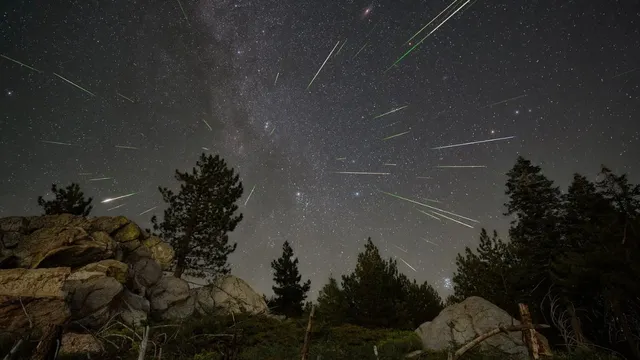- By Supratik Das
- Sun, 04 May 2025 04:34 PM (IST)
- Source:JND
Stargazers worldwide are in for a treat this week as the ETA Aquarids meteor shower 2025, one of the brightest yearly meteor showers, is set to peak between May 5 and May 6. Famous for its fiery streaks and bright, glowing trails, the shower is caused by debris left behind by Halley's Comet, which is a once-every-76-year visitor to Earth’s skies. The ETA Aquarids (also called Aquardiis) can be particularly observed from the Southern Hemisphere, although Northern Hemisphere observers can still catch a one-of-a-kind sighting that is called "Earthgrazers," that is long meteor streaks skimming across the horizon.
What Are the ETA Aquarids?
The ETA Aquarids meteor shower occurs each year as Earth travels through dust and debris cast off by Halley's Comet, which was last visible from Earth in 1986 and is due to be seen again in 2061. The comet leaves behind rocky material that enters Earth's atmosphere, producing a meteor shower as the particles burn up, producing bright flashes of light in the nighttime sky.
The shower began to activate on April 19 and will run until May 28, but the best viewing will be in the wee hours of May 5 and 6, says the American Meteor Society. Unlike most other meteor showers that flash shortly across the sky, Aquarid meteors are characterized by their long-lasting light trails, which make them particularly captivating to observe. They provide one of the final chances for stargazers to see a major shower before the next expected event, that is the Delta Aquarids, which may occur in late July.
Best Time And Conditions
To see the finest glimpses of the ETA Aquarids 2025, scientists advise venturing outside during the hours of midnight to dawn between May 5 to 6, when the sky is at its darkest. The meteors can be seen anywhere in the sky, although they radiate from the direction of the constellation Aquarius. Avoid areas with light pollution, such as cities and towns. Countryside, fields, or hilltops will provide the best, most unobstructed views. As ever, cloud cover and moon brightness may affect visibility, so checking local weather forecasts beforehand is recommended.
Also read: ISRO, NASA Finalise NISAR Launch Preparations; Indian Astronaut To Join Mission | Details Inside
At its peak, observers might be treated to as many as 30 meteors an hour, depending on their location and the clarity of the night sky. The shower will indeed be brighter down South, but observers northward will have some pretty nice action to view, particularly if they spot the rare Earthgrazers along the horizon. NASA explains that while 48.5 tons of space material actually enter the Earth's atmosphere each day, meteor showers like the Aquarids provide a burst of astronomical action that is predictable and dazzling.
Also read: Mystery Of Gold’s Origins Solved? NASA’s Study Of Ancient Magnetar Flares Offers New Clues

